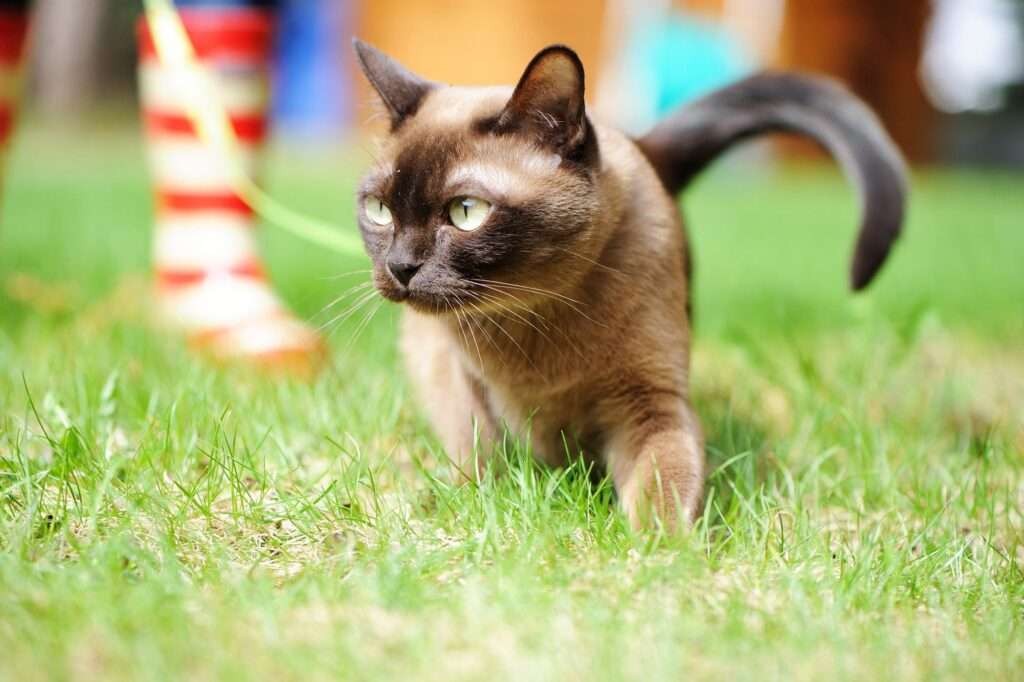
Size: 7-16lbs
The Chartreux is a medium sized cat. She has thick bones and a lot of muscle. She appears to be rounded and thick. Males are bigger than females. She has a wide chest, a robust neck, powerful jaws, and an expressive muzzle. The legs are sturdy despite being relatively thin. Chartreux cats are also recognized for their “smile”; due to the form of their heads and tapering muzzles, they frequently appear to be smiling.
The Chartreux has a robust, thick coat. These cats are distinguished by their peaceful nature and blue-gray coat. During the winter, it lengthens and thickens considerably. The coat has a somewhat rough texture since it serves as the cat’s defense.

Behavior
Activity Level: Calm
Social needs: need company,
The Chartreux cats have a kind temperament and get along well with both kids and other animals. They particularly like playing for brief periods of time with their owners. The Chartreux is often referred to as “polite” by breeders and owners, having a strongly established sense of order and right conduct, even while playing. They have swift feet, rapid movements, and are incredibly dexterous for such a sturdy cat.
The Chartreux would play whenever she feels like it, and if there are no cat toys around, she will make one out of anything she can find. She could need interactive play to stay in shape and make sure she receives enough exercise. The Chartreux enjoys hunting competitions where she may display her ancestry.
Origin/History
In the 1500s, this stunning blue cat was most likely transported to France from the Middle East. The Chartreux were likely worker cats that were actively bred by Carthusian monks close to Paris. In the late 1920s, France began a rigorous Chartreux breeding program that produced a robust, healthy Shorthaired Blue cat with a beautiful face and a muscular physique. It wasn’t until 1970 that the first Chartreux made its way to America.
Care as a Pet
Chartreux is a simple keeper who is largely independent but will gladly participate in games. It doesn’t require constant attention and enjoys the company of kids and other animals.
Because the Chartreux cat breed is so intelligent, you should test it by teaching it new tricks or puzzles involving treats. Keep cat treats stored away, and if this problem persists, think about installing toddler locks on cabinet doors. Some adventurous Chartreux cats have even been known to access cabinets.
The coat of the Chartreux is soft and wooly, making it simple to maintain. Since its distinct texture is better suited to the action of a comb than a bristle brush, many experts advise against brushing it. Although the Chartreux does a great job of grooming itself, the extra care will prevent mats from forming and serve as a fun time to spend with your cat.
Nutrition and Diet
A balanced diet should be served to the Chartreux, and caution should be exercised to avoid overfeeding. Be sure to choose a meal that isn’t overly alkaline if your pet has a propensity to form struvite crystals (many plant-based feeds lead to high levels of alkalinity).
Make sure your cat always has easy access to clean water to drink. If your cat doesn’t drink enough water, struvite crystals may form as a result of urine being more concentrated. If your cat suffers from this condition, think about introducing wet food to the diet to add moisture.
Grooming needs
The Chartreux coat is simple to care for, requiring only twice-weekly brushing. Brush them more often in the spring as they shed their winter coat.
Table





